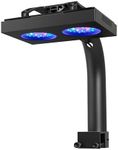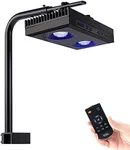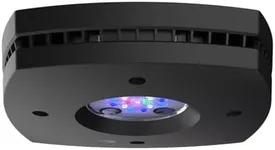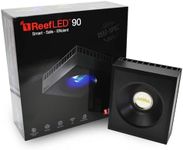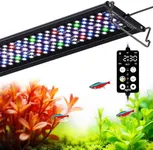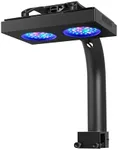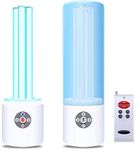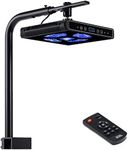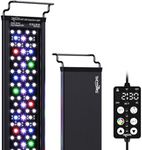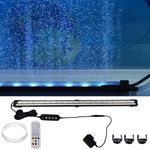Buying Guide for the Best Led Reef Light
Choosing the right LED reef light is crucial for maintaining a healthy and vibrant reef aquarium. The right light will not only enhance the beauty of your tank but also support the growth and well-being of your corals and other marine life. When selecting an LED reef light, consider the specific needs of your tank inhabitants, the size of your aquarium, and your personal preferences for features and control options. Here are some key specifications to consider and how to navigate them to find the best fit for your reef tank.Light SpectrumThe light spectrum refers to the range of light wavelengths emitted by the LED light. This is important because different wavelengths support different biological processes in corals and other marine life. A full spectrum light, which includes a mix of blue, white, red, and green LEDs, is generally recommended as it closely mimics natural sunlight and promotes healthy coral growth and coloration. If you have a mixed reef with various types of corals, a full spectrum light is a good choice. For tanks with specific coral types, you might need to adjust the spectrum to meet their particular needs.
PAR (Photosynthetically Active Radiation)PAR measures the amount of light available for photosynthesis, which is crucial for coral health. Higher PAR values mean more light energy is available for corals to convert into food. For most reef tanks, a PAR value between 100-300 is sufficient, with higher values needed for tanks with high-light corals like SPS (Small Polyp Stony) corals. Lower PAR values are suitable for tanks with soft corals or LPS (Large Polyp Stony) corals. Assess the light requirements of your specific corals to determine the appropriate PAR range.
Coverage AreaThe coverage area indicates how much of your tank the light can effectively illuminate. This is important to ensure that all areas of your tank receive adequate light. LED reef lights come in various sizes and configurations, so choose one that matches the dimensions of your aquarium. For larger tanks, you may need multiple lights or a light with a wider coverage area. Ensure that the light can penetrate to the depth of your tank, especially if you have a deep aquarium.
Control FeaturesControl features refer to the ability to adjust the light settings, such as intensity, spectrum, and timing. Advanced LED reef lights often come with programmable settings, remote controls, or smartphone apps that allow you to customize the lighting schedule and intensity to mimic natural day and night cycles. These features are important for creating a stable and natural environment for your corals. If you prefer a hands-on approach, look for lights with manual controls. For more convenience and precision, opt for lights with advanced programmable features.
Build Quality and DurabilityBuild quality and durability are important to ensure that your LED reef light lasts and performs well over time. Look for lights made from high-quality materials with good heat dissipation features, as LEDs can generate heat that needs to be managed to prevent damage. Waterproof or water-resistant lights are also beneficial in the humid environment of an aquarium. Check for user reviews and manufacturer warranties to gauge the reliability and longevity of the light. A well-built light will save you money and hassle in the long run.
Energy EfficiencyEnergy efficiency refers to how much power the light consumes relative to the amount of light it produces. This is important for keeping your electricity costs down and reducing your environmental footprint. LED lights are generally more energy-efficient than other types of aquarium lighting, but there can still be variations between models. Look for lights with high lumens per watt ratings, which indicate better efficiency. If you have a large tank or plan to run the lights for extended periods, energy efficiency becomes even more critical.


